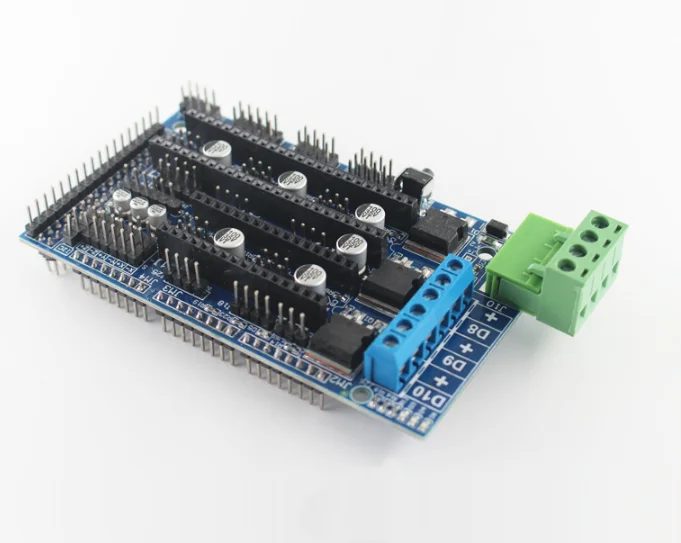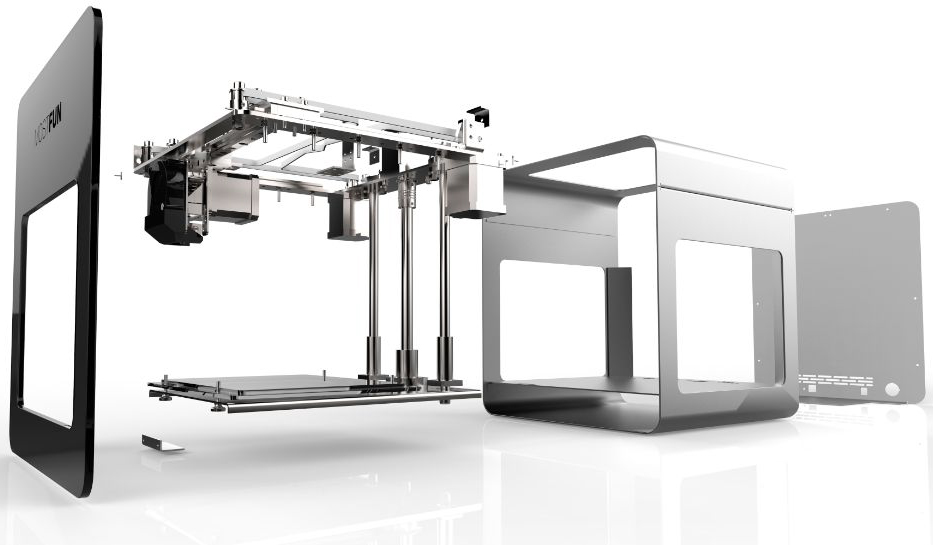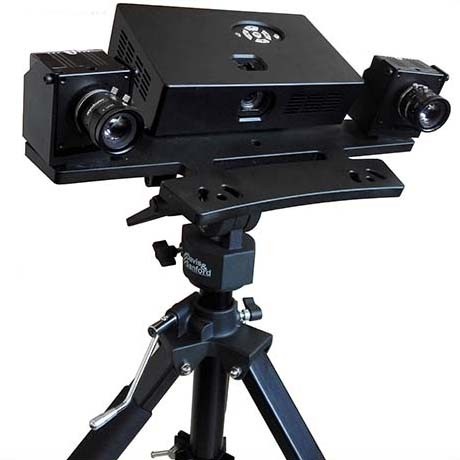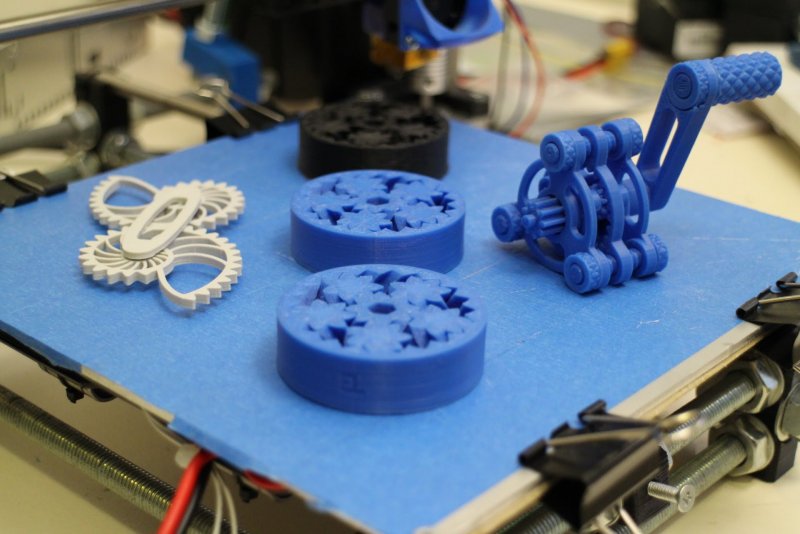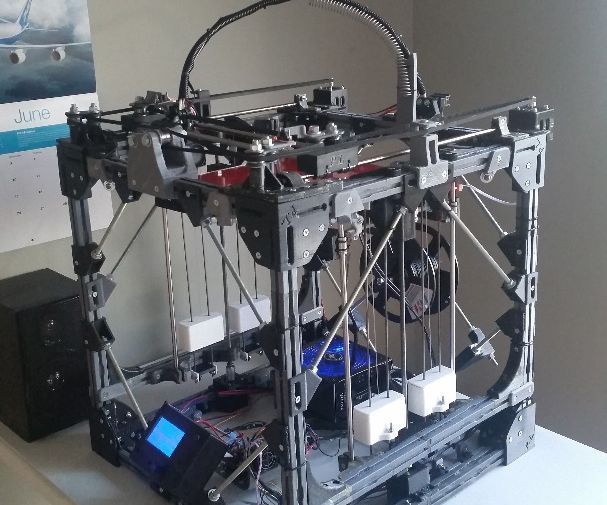Best colors for 3d printing
Best 3D Printing Filament Colors
So you’re just getting into 3D printing but want to make sure you have everything you need to get started. What are the best 3D printing filament colors?
The best filament colors for 3D printing that you should have in your arsenal include white, grey, blue, red, green, purple, rainbow, heat-changing, and even glow-in-the-dark. Conversely, some of the worst filament colors for 3D printing that you should avoid are neon colors, black, and yellow.
If you’re in the market for some new 3D printing filaments, then you’ve likely seen the wide breadth of choices available to you. It seems like filament makers have figured out how to make just about any color under the sun. In this article, we’ll go over some of the best filament colors out there for making the perfect 3D prints every time. You’ll also learn about three of the worst 3D printing filament colors that you should consider avoiding.
Since you’re here reading this article, we know that you really just want to know what the best 3D printing filament colors are. And to ensure we’re giving the most accurate information that we can, we’ve combined our own experience and knowledge with the opinions of others in the field and research through discussion forums. We’re confident that the filament colors seen below are truly the best ones you should get your hands on to start printing!
What Are The Best 3D Printing Filament Colors?
While listing the best 3D printing filament colors might be a bit subjective, since everyone has their own color preferences, we’re going to do our best! Based on the input from a number of 3D printing enthusiasts, we’ve come up with the following list of the six best filament colors on the market. So without further ado, let’s just straight into it.
Normal 3D Printing Filament Colors
White
Picture of a White Printer FilamentWhite is a fan favorite among just about everyone who’s serious about 3D printing. Its simple manufacturing process that doesn't require any additional pigmentation makes it compositionally strong compared to many other colors — especially those at the very bottom of this list.
Its simple manufacturing process that doesn't require any additional pigmentation makes it compositionally strong compared to many other colors — especially those at the very bottom of this list.
To make it even better, white is also the easiest color to paint. Since it’s white, you don’t have to worry about needing to cover up another color underneath whatever you’re trying to paint. And since many enthusiasts like to paint their prints to make them perfect, white is the best base color to go with.
Grey
Picture of a Grey Printer FilamentGrey is a great filament color for 3D printing for many of the same reasons as white. It’s easy to manufacture, doesn’t have any of the brittleness or fading issues that the colors at the end of this article have, and it’s also incredibly easy to cover and paint.
Many people that regularly 3D print will default to either grey or white as their normal color to 3D print with. Grey has a bit of a range of colors as well, but for most people, a lighter grey is typically used more commonly. The lighter it is, the easier it is to paint over. But if you want something a bit darker, an average grey-colored filament will provide a great looking print!
The lighter it is, the easier it is to paint over. But if you want something a bit darker, an average grey-colored filament will provide a great looking print!
Standard Colors (Blue, red, green, purple, orange)
Picture of Standard Color Printer FilamentsFor those of you who don’t really want to use grey or white and then paint the print whatever color you like or anyone who just wants to add some color to their 3D model collection, then many “standard” colors are some of the best to use. When we say standard colors we’re referring largely to the primary and tertiary colors that make up everything else.
Of those colors, the best ones to use for 3D printing are blue, red, green, orange, and purple. You might have noticed one exclusion, and a primary color at that — yellow. As you’ll read about later, yellow fades more than any of these other colors. But feel free to use these five colors to make some eye-popping prints!
Unique 3D Printing Filament Colors
Silk Rainbow Multicolor
Picture of a Silk Rainbow Multicolor Printer FilamentWhile the above colors are great for the vast majority of 3D prints and enthusiasts, sometimes you want to change things up a bit.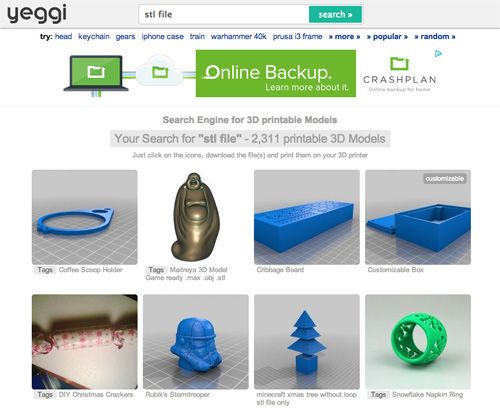 And one of the best ways to do that is with a rainbow multicolor filament. Our personal recommendation is to go with one of the “silk” ones that give the final print a shiny, smooth finish.
And one of the best ways to do that is with a rainbow multicolor filament. Our personal recommendation is to go with one of the “silk” ones that give the final print a shiny, smooth finish.
While you can get rainbow filament that looks like a normal rainbow, there are so many variations out there to choose from that you can have hundreds of rainbow prints and still not have tried them all! Keep in mind, with rainbow filaments it’s better to use them on bigger prints so that there’s enough room for multiple colors to show up.
Thermochromic (Heat-Changing) Filament
Picture of a Thermochromic (Heat-Changing) FilamentAs 3D printing becomes more advanced, one of the most intriguing new technologies in filament coloration is using thermochromic filaments. That sounds like a fancy word, but it’s just the more technical way of saying that the color of the filament changes based on heat.
While the colors involved in thermochromic 3D printing filament can be all sorts of various combinations, our favorite is the Zi-Rui Thermochromic PLA Filament.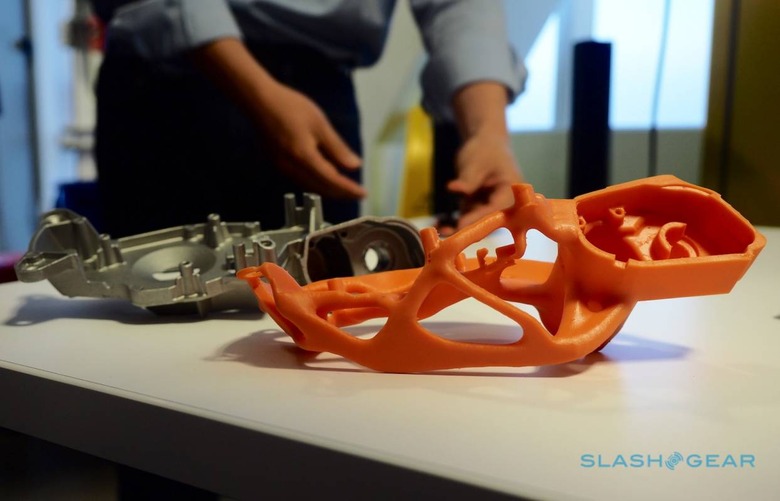 Depending on the temperature, the print will change from yellow, to orange, to black. So if you move it around the room, you could get different color variations. How cool is that?
Depending on the temperature, the print will change from yellow, to orange, to black. So if you move it around the room, you could get different color variations. How cool is that?
Glow In The Dark Filament
Picture of a Glow In The Dark FilamentLast but not least, we have another fan-favorite: glow in the dark 3D printing filaments. While this one might be a bit controversial since some of the cheap brands don’t offer a very high-quality filament, it’s so popular that we just couldn’t leave it off our list.
After all, think back to being a kid. Weren’t things that glowed in the dark just the coolest things ever? We all still have a bit of a kid inside us, and glow in the dark is still pretty cool! With this type of filament, you can print yourself an entire glow in the dark cache of little models and figurines. Just make sure you get a high-quality filament, such as HATCHBOX, for example!
Which 3D Printing Filament Colors Should You Avoid?
Now that you know about some of the best filament colors for 3D printing, you should probably get an idea of what some of the worst ones are. For one reason or another — which we’ll explain for each one — the next few colors you see listed here are ones that you might want to avoid using in your 3D printing.
For one reason or another — which we’ll explain for each one — the next few colors you see listed here are ones that you might want to avoid using in your 3D printing.
Neon Colors
While this isn’t exactly a specific color or anything, it is widely discussed in the 3D printing world that neon colors in general are one of the main filament types or colors to steer clear of. While they can certainly create some of the most eye-popping prints that you’ll ever see, they come with a slew of potential issues.
Depending on the brand, quality, color, and more, neon colored 3D printing filaments can be a headache to use. Some of them don’t bond well and begin to fall apart. Others come out looking almost transparent, revealing the support structures inside and not looking the way you’d want it to. Overall, you’ll likely be happier with the colors mentioned above!
Black
We know, we know. Black is one of the best looking colors on quite a few things that you might be 3D printing. And the truth is, with a high-quality brand you might actually have no issues whatsoever using black filament. But for many brands and many users, black filament tends to lead to excessive brittleness and easier cracking. Why is this?
And the truth is, with a high-quality brand you might actually have no issues whatsoever using black filament. But for many brands and many users, black filament tends to lead to excessive brittleness and easier cracking. Why is this?
The issue of a black coloration leading to brittleness actually isn’t something that only comes up with 3D printing. It’s an issue in the entire textile industry. This is because oftentimes, black goods are the result of an over-dye, i.e. something that was meant to be a different color didn't match what it was supposed to look like. It then goes to a pile of black to be re-dyed.
It is this multifaceted dying process that leads to the black filament (and other materials) being more brittle than its other-colored counterparts.
Yellow
Unlike the black filament above, yellow isn’t something to be avoided because of it being too brittle. No, instead you might want to consider avoiding using yellow filament just because of its coloration over time.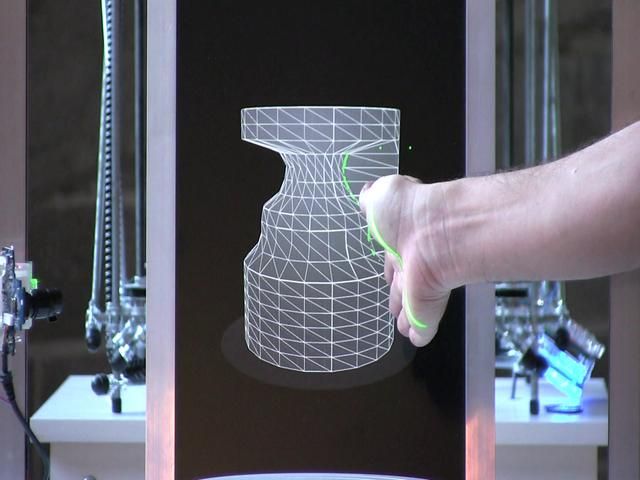 Yellow pigment can be made from a lot of different sources, and its brilliance makes it a popular choice for 3D printing enthusiasts.
Yellow pigment can be made from a lot of different sources, and its brilliance makes it a popular choice for 3D printing enthusiasts.
But the issue with yellow pigment is that it tends to react to UV light (think sunlight) more than other colors, and not in a good way. Yellow begins to break down and decay faster under UV light than other colors, which leads to the color fading much more quickly.
Which Filament Colors Should You Buy?
3D Insider is ad supported and earns money from clicks, commissions from sales, and other ways.
One of the best things about FDM printing is the fact that there are probably several hundred different types and brands of filament materials out there. From standard PLA to high-temperature filaments and fancy gold-colored ones, it seems that there’s a brand-new and innovative market to hit the market every single year.
However, this embarrassment of riches can also be intimidating for beginners to the hobby.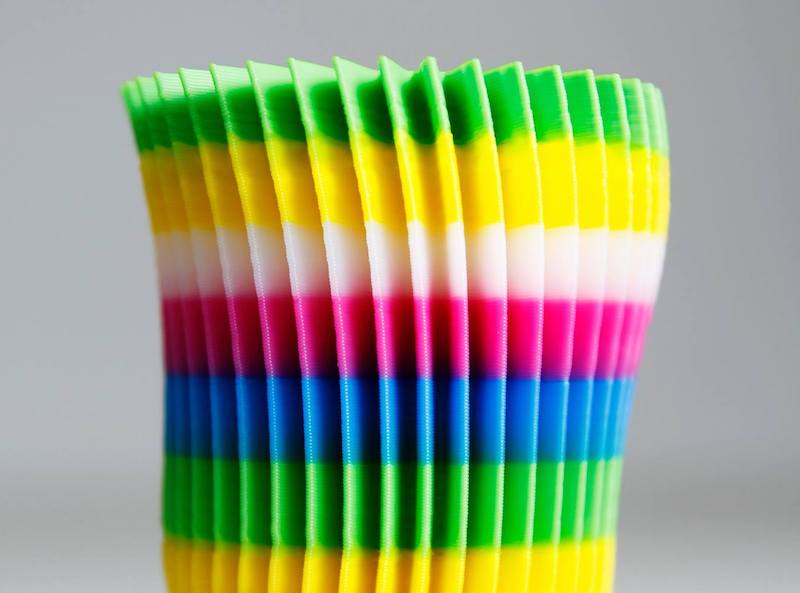 Which filament should you have if you’re still new? Which filament should you always keep in stock? Is there a particular filament that can help you level up your 3D printing skills? We’ll answer all those questions in this article.
Which filament should you have if you’re still new? Which filament should you always keep in stock? Is there a particular filament that can help you level up your 3D printing skills? We’ll answer all those questions in this article.
As a beginner, it’s tough to figure out what works for you. The best way to ease yourself into this hobby is to realize how much fun it can be, despite the frustrating moments. This sampler pack of four different colors (blue, green, orange, and red) from Gizmo Dorks is a great way to get you to start experimenting with your new 3D printer without spending too much.
Each of the four spools that come with this sampler pack only weighs 200 grams, so it’s not a huge commitment. And while the colors aren’t exceptionally good, you should be able to come up with a few interesting and fun projects.
The great thing about PLA is that it’s a very beginner-friendly material. If your printer doesn’t come with a heated bed, or if you don’t have a glass bed, then you can still work with PLA perfectly fine.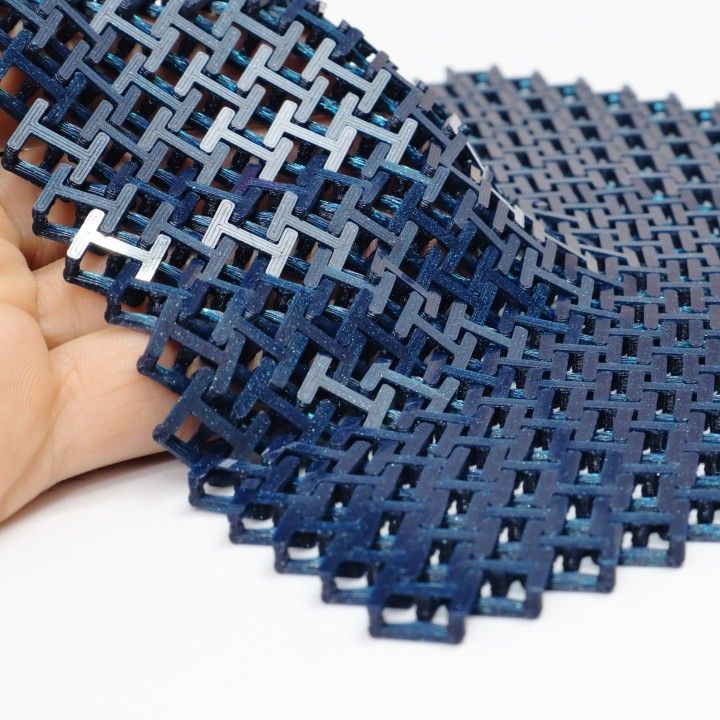 It’s also not prone to warping, which is one of the biggest challenges in 3D printing.
It’s also not prone to warping, which is one of the biggest challenges in 3D printing.
You can also take this chance to try your hand at finishing your PLA prints. Colored PLA prints are best for this. All it takes is some sandpaper and a polishing compound and you should be golden. The techniques for finishing PLA are nothing complex and you’ll get the hang of it after a while.
When you suddenly get an idea of something to 3D print, you will want to have a filament on hand that’s easy to work with, versatile, and inexpensive. PLA in either White or Natural colors is perfect for this. As we’ve mentioned, PLA is one of the easiest materials to work with.
Since it prints at relatively lower temperatures and does not warp, you can print with PLA at high speeds. This means turning your idea into reality as quickly as possible. The reason we’re going with either White or Natural is that it’s very easy to paint PLA with any color that strikes your fancy. This is much better than being stuck printing with blue or hot pink filament because that’s all you have.
The other reason we’re going with PLA as our ‘go-to’ filament is the fact that it’s sustainable and 100% biodegradable. When experimenting, you will invariably go through failed prints that you need to scrap. This does not help our planet’s problem with solid waste, so we prefer going with PLA for our more ‘disposable’ projects. Keep in mind that PLA filament can come with non-biodegradable additives, like paint, so double-check with the manufacturer if their products are 100% biodegradable.
To experiment with – PVA
Polyvinyl Alcohol (PVA) is certainly one of the more unusual filament materials because, when used correctly, it should not show up on the final print. Instead, PVA is used as a material for support structures in case your design has a lot of overhanging features. You will need a printer with multi-extruder features to fully realize the potential of PVA, so perhaps this is something you’ll have to save for later.
What makes PVA such an excellent support material? For one, this isn’t true for all filament types. PVA is particularly suitable for PLA because they print at similar temperatures, which means that one filament will not compromise the quality of the other. If you’ve got a lot of PLA on hand, then printing with PVA as support is an excellent way to expand your 3D design horizon.
PVA is particularly suitable for PLA because they print at similar temperatures, which means that one filament will not compromise the quality of the other. If you’ve got a lot of PLA on hand, then printing with PVA as support is an excellent way to expand your 3D design horizon.
The other peculiar characteristic of PVA is that it readily dissolves in water. PVA is the same material used for those laundry detergent pods that you can just throw in the wash. This means that finished prints with PVA supports can be simply submerged in water to completely dissolve those support structures away. Best of all, the vinyl alcohol that gets dissolved in the water is completely safe for disposal down your sink.
To learn advanced techniques – Clear TPE
TPE, or Thermoplastic Elastomer, is also one of the more unusual filaments you can try. The best way to describe it is rubber-like – flexible, with excellent impact resistance, and a non-slip characteristic. It could be useful as a phone case, non-slip pad, gaskets for your pipes, or a door stopper.
All this talk about TPE’s physical characteristics may not seem like a big deal, but one thing you need to know is that printing with flexible filaments is a whole different monster. You’ll have to anticipate a lot of deformation and buckling inside the extruder assembly, as well as issue with bed adhesion and stringing. However, these are nothing that a bit of tweaking of the printer settings and application of adhesives to the print bed won’t solve.
The usefulness of TPE more than makes up for its slightly more complicated printing process. It’s not the toughest material to work with, but it’s a great way for you to learn about the more nuanced aspects of 3D printing.
To learn advanced techniques, Part 2 – White ABS
It’s peculiar to see that one of the top two most popular filaments used in 3D printing is also one of the toughest to work with. This is probably a testament to the usefulness of ABS mostly because of its toughness, thermal stability, and chemical stability.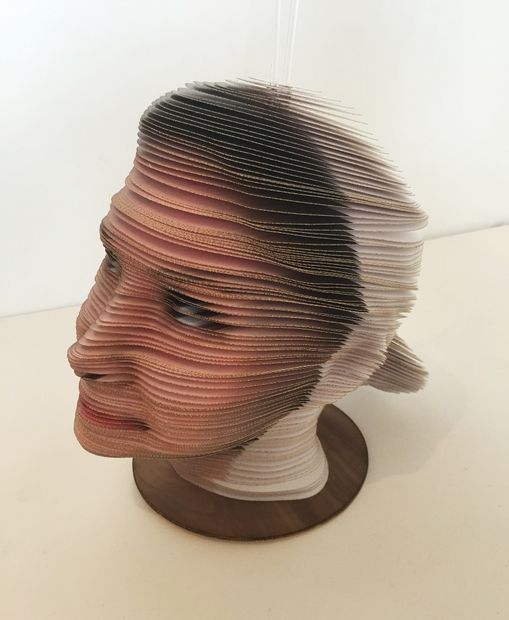 It has a lot of commercial and industrial uses, despite the setback innate to the material.
It has a lot of commercial and industrial uses, despite the setback innate to the material.
For beginners, ABS can prove to be one of the most frustrating filaments. It prints at very high temperatures, and you’re going to need an appropriately hot print bed. It’s also notoriously prone to warping, so you’re certainly going to need some adhesives. Even those measures may not be enough, and there’s a whole range of tools and methods that you can try to get the perfect ABS print.
From brims and rafts to enclosures for your build platform, there’s no shortage of all the creative ways that 3D printing professionals have come up with to overcome the challenges of ABS. If you haven’t printed with ABS before, the best way to learn how to do it is to go ahead and give it a try.
One more thing we should mention is that ABS emits noxious and possibly carcinogenic gaseous compounds during printing. Don’t print with ABS in a room without ventilation and try to stay away from the printer as much as you can.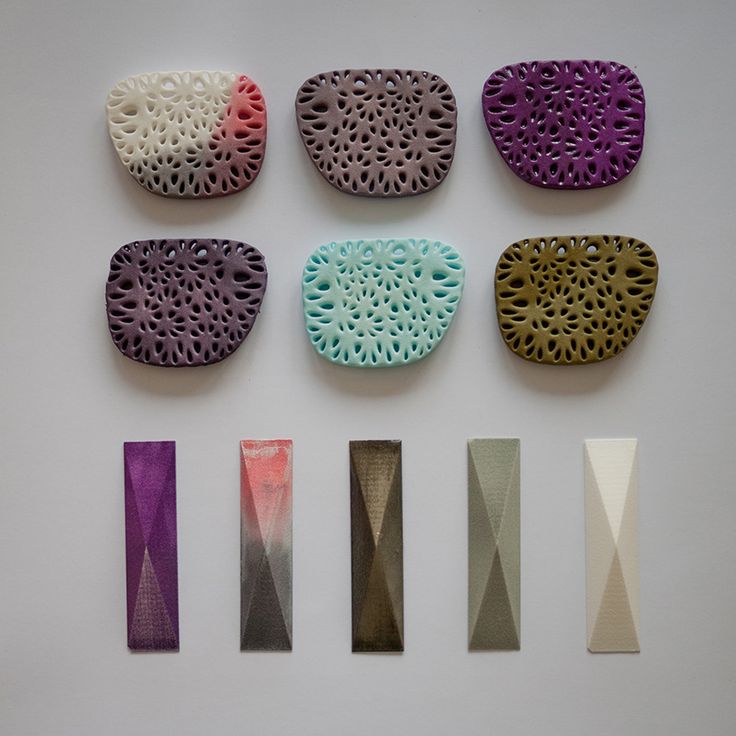 If necessary, only tinker with your 3D printer with the appropriate breathing protection that can filter out chemical compounds.
If necessary, only tinker with your 3D printer with the appropriate breathing protection that can filter out chemical compounds.
Going back to the fun side of things, there are now filaments that you can use to 3D print objects that simulate the look of wood and certain metals. Called composite filaments, these filaments are typically made of fine solid particles suspended in a PLA matrix in varying ratios. The use of PLA means that printing with these filaments is pretty easy while delivering a unique visual appeal.
This sample pack of composite filaments from AMOLED includes Wood, Bronze, Marble, and Shining Gold. The names should be enough to tell you what material each of the filaments is mimicking. This is a great way to spruce up your old designs or come up with 3D prints that are nice enough to be given as gifts.
While these filaments come up with prints that already look very good, you can make them even better with some finishing. Depending on the filament, there are various finishing options available to you.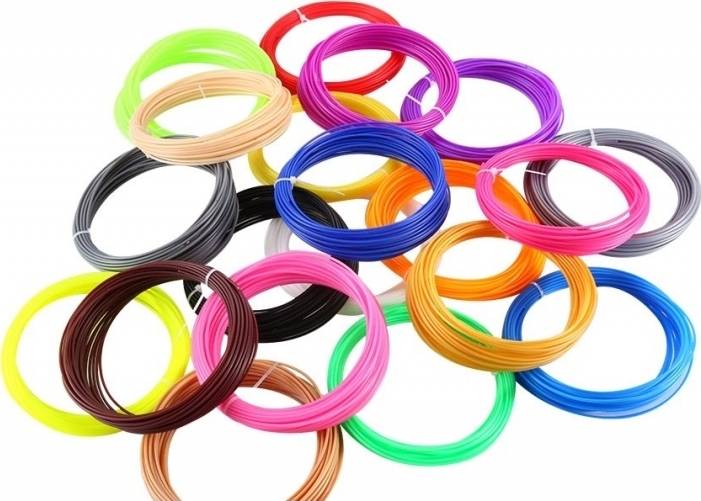 Wood can be finished with some polishing and wood lacquer, while bronze can be can rusted to get that unique patina color.
Wood can be finished with some polishing and wood lacquer, while bronze can be can rusted to get that unique patina color.
Composite filaments are a great way to stretch your creative muscles without giving you too much of a hard time. Just make sure to read the printing instructions of the filament you’re getting – you may have to swap out your printer’s stock nozzle with something a little more wear-resistant.
Final thoughts
If you’re just starting with 3D printing, our advice is to take it slow. It’s easy to get excited about all the different filaments available out there only to find yourself in over your head with how problematic they can be. The skills will take some time to develop, but you’ll get there eventually by reading up on new stuff and trying them out.
No matter which filament you use, don’t forget that 3D printing should be fun. It’s an exercise in creativity and in how you can turn your imagination into reality. It’s not always simple, but it does not have to be complicated.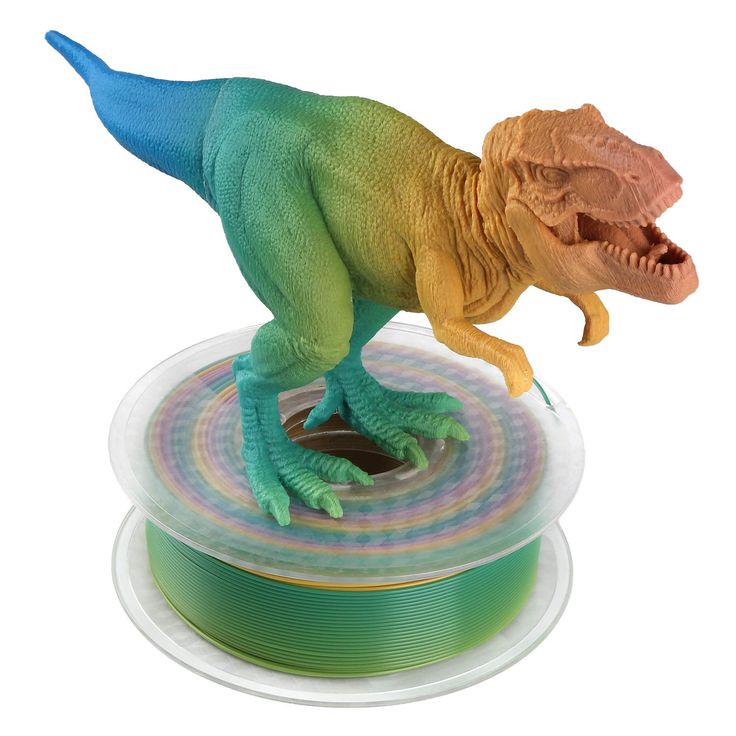
Warning; 3D printers should never be left unattended. They can pose a firesafety hazard.
🤹 The best multi-material and multi-color 3D printing STL files・Cults
🤹 The best multi-material and multi-color 3D printing STL files
Download multi-material and multi-color 3D models
and multimaterial 3D printing. All of these 3D models were selected because they are useful, well designed, artistic or simply decorative, but above all printable in multiple colors and materials. nine0007
Multicolor Star Fidget
Free
Colored headphone stand
Free
Multicolored toy "Flying helicopter"
Free
Video game planter collection
Free
nine0008 Buzz Lightyear - Multi Color PrintFree
Low polymer toy - multi and dual extrusion version
Free
Animal ring collection - double extrusion version
Free
Bob Omb! Multi Color/Material
Free
nine0008 Flexi Raptor (Dual Extrusion)Free
Spiderman Figurine 4 colors
Free
Low-Poly Squirtle - multi and dual extrusion version
Free
Low polymer toy - multi and dual extrusion version
Free
Multi-Color World with Stand
Free
Eiffel Tower - Color (French Flag)
Free
Multi-Color Cell Model
Free
Dual D20
Free
Desk Shrooms
Free
Multi-Color Pickle Rick
Free
Low Polymer Toys - Double Push Version
Free
Multi-Color Owl Bookmark
Free
Multi-Color Portal Gun (Rick and Morty)
Free
Multi-Color Mini Plant Cell
Free
nine0008 Low Poly Pikachu - Multi and Dual Extrusion VersionFree
Multi-Color Self-Watering Planter
Free
Low Poly Bulbasaur - Multi and Dual Extrusion Version
Free
Multi-Color Harry Potter Coasters
Free
nine0008 Big Optimus Prime! - Multi Material ModelFree
Multi-Color Boxing Gloves
Free
Low Poly Charmander - Multi and Dual Extrusion Version
Free
4 Color Tigger - Multi Material Torture Test
Free
nine0008 FoxFree
3 colors Anatomical Heart
Free
Batman Beyond V2 Multimaterials
Free
Multi-Color Mario Keychain
Free
Multi-Color Baby Dory
Free
nine0008 Multi-Color Pencil CupFree
Multi-Color OVA Lamp
Free
Multi Color Kirby! [4 Colors]
Free
Multi-Color Soccer Ball Keychains
Free
Gonk Droid
Free
nine0008 Multi-Color Guitar KeychainFree
Multi-Color Connect Four
Free
Multi-Color Dinosaur Toothbrush Holder
Free
Multi-Color Kobayashi Fidget Cube
Free
Multi-Color Winterfell Game of Thrones
Free
Nozzles for Crash Bandicoot
Free
Multi-Color Textured Football Keychain
Free
Zelda Planter - Single/Double Extrusion Planter Minimum Size
Free
Umbreon (multimaterial)
Flexi Raptor (Dual Extrusion)
Big Optimus Prime! - Multi Material Model
Big Optimus Prime! - Multi Material Model
Here is our selection of best multi-material and multi-color files for 3D printers , all these creations are taken from STL file site Cults and 100% 3D printing in color! .
This collection includes free STL files printable objects in multiple materials or multiple colors. This technology has recently enabled the consumer sector of 3D printing to gain even more market share. In the past limited to a single color and a single material, 3D printing is now much more interesting thanks to solutions like the Original Prusa i3 MK2 Multi Material upgrade kit , Mosaic Manufacturing's Palette+ or the many players that offer dual color printing like BCN3D , Dagoma , Ultimaker , XYZPrinting ....
Obviously adding a few materials or colors allows 3D designers to create more and more beautiful or more useful objects and this collection of 3D printing files is great illustration! These 3D designers offering their creations on the Cults 3D file upload platform really competed in ingenuity to create all these objects, if you download them don't forget to post pictures of the result! We're very excited to see your photos in the Makes part of these pretty technical printables! nine0007
PLA from TOPZEAL that changes color when heated (3d printing)
Hello! Many people already have 3D printers here, and it’s hard to surprise with an abundance of materials for printing, but there are exotic types of rod, one of which I will test today.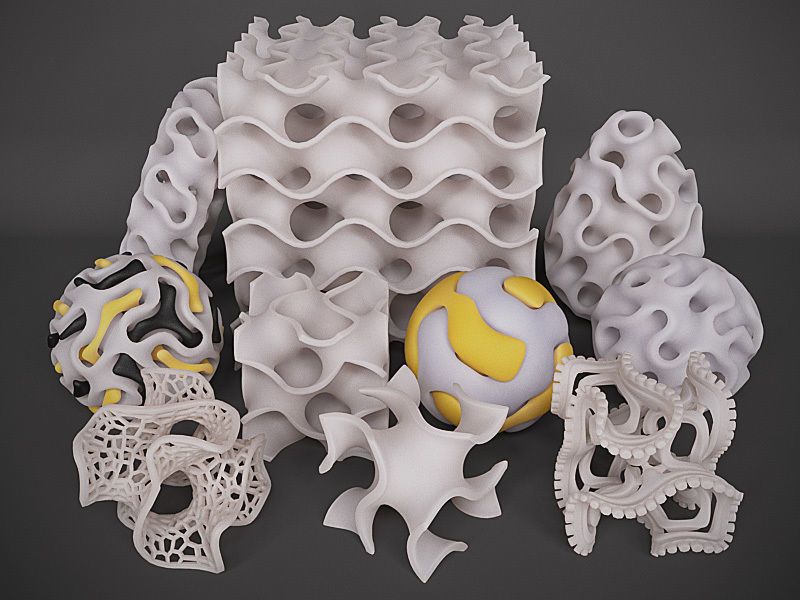 This filament in terms of its mechanical characteristics is no different from the classic PLA, but it can change its color when heated above 33°C, so that the color of the model will change even from the heat of the hands. This solution was conceived more as a decorative one, but it can also be used for visual control of the temperature of objects. More details under the cut. nine0007
This filament in terms of its mechanical characteristics is no different from the classic PLA, but it can change its color when heated above 33°C, so that the color of the model will change even from the heat of the hands. This solution was conceived more as a decorative one, but it can also be used for visual control of the temperature of objects. More details under the cut. nine0007
Characteristics
Material: PLA
Diameter of the rod: 1.75mm
Press temperature: 190-230 ° C
Table temperature: Heating is not required, but for better adhesive C
Color change temperature: from 33°C
Filament weight: 1kg
Length: 343m
Unpacking and appearance
Coils are supplied in 9 yellow bags0253
Inside unmarked cardboard box
Characteristics are indicated on the coil itself
The package is airtight, on one side there is a ziplock for storage after unpacking
Testing
I chose not the best option, you can even say the worst, because.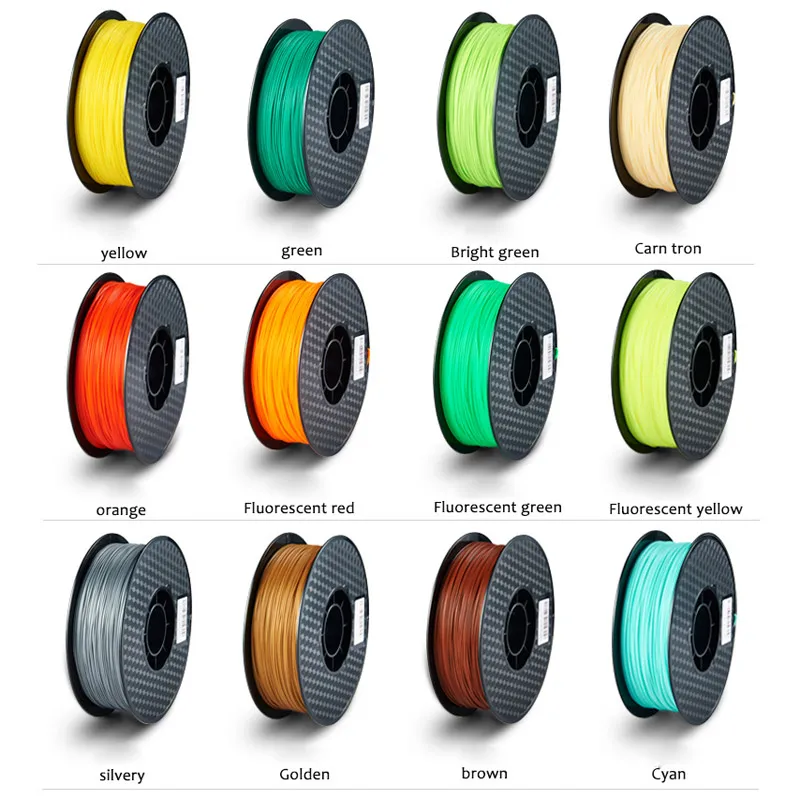 the transition from yellow to white is more difficult to see than from a more saturated blue or pink color. Okay, let's work with what we have. Print settings left as standard, nozzle 200°C degrees, table 60°C
the transition from yellow to white is more difficult to see than from a more saturated blue or pink color. Okay, let's work with what we have. Print settings left as standard, nozzle 200°C degrees, table 60°C
I printed a cube with 100% infill, I thought that the color would start to change in the process
The heat transfer with this filling is not bad and the case did not have time to cool below 33°C
But after a while the upper part became colder and changes became noticeable
After some time, the table cooled down and the cube turned yellow all over
To show the transition process more clearly, I drew and printed a plate 3 mm thick with 100% filling, poured water into a glass with a temperature of about 80 ° C, under such conditions the color change occurs almost instantly
True, in the photo the border looks more blurred, it seems clearer with the eyes
As I wrote under the heading, this type of plastic was conceived as decorative, but it seems to me that it can also fit as a temperature indicator.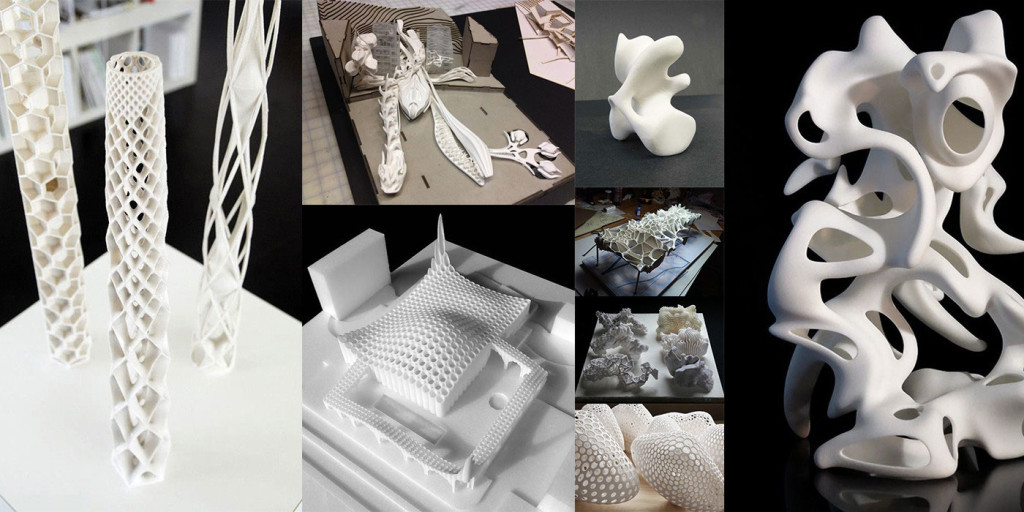 I will use the cube again as a test subject.
I will use the cube again as a test subject.
The temperature of the table is 40°C, the color stopped changing after 5 minutes, but just in case, I waited for 10
50°C, color creeps up again
60°C, the cube is almost fully warmed up
Yes, on gifs the transition is seen quite badly, I marked with a marker what I saw with my own eyes, then I checked with the thermal imager, it turned out pretty close to the truth, the color changes at a temperature of about 35 ° C
On the same blue plastic, the transition boundary would be much clearer, so you can print a model for a specific radiator or element, put marks on an oblong body after calibration and an individual overheating indicator is ready, here is an example of other colors from the store
I also checked the mechanical properties, it turned out to be quite difficult to break a 3mm plate with your fingers
The edges are practically not deformed after the collapse, the filament is quite elastic and durable
I found in an old review a gif with testing a similar record from FDPlast
Result
Creozone then turned out to be more plastic, although the fracture resistance showed more fdplast
TOPZEAL filament burns like classic PLA, with a blue flame, without stink and soot
There are practically no traces of burning on the outside
There are dark areas on the bottom that indicate exposure to high temperatures, but this is the norm for pigmented plastic
Results
The price tag seems to be not very large for an exotic type, while in terms of physical properties it surpasses the classic cheap local PLA, it does not stink during printing, it sticks to the table well, the layers also sinter perfectly, so the material itself is not bad, but the color change in Depending on the temperature, it can transform familiar models or even allow you to create something useful, people printed mugs or “covers” for disposable cups, cases for mobile phones online.


